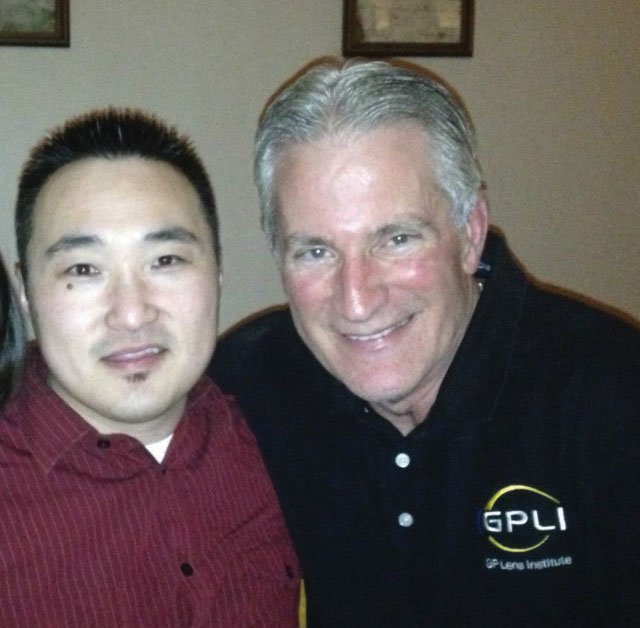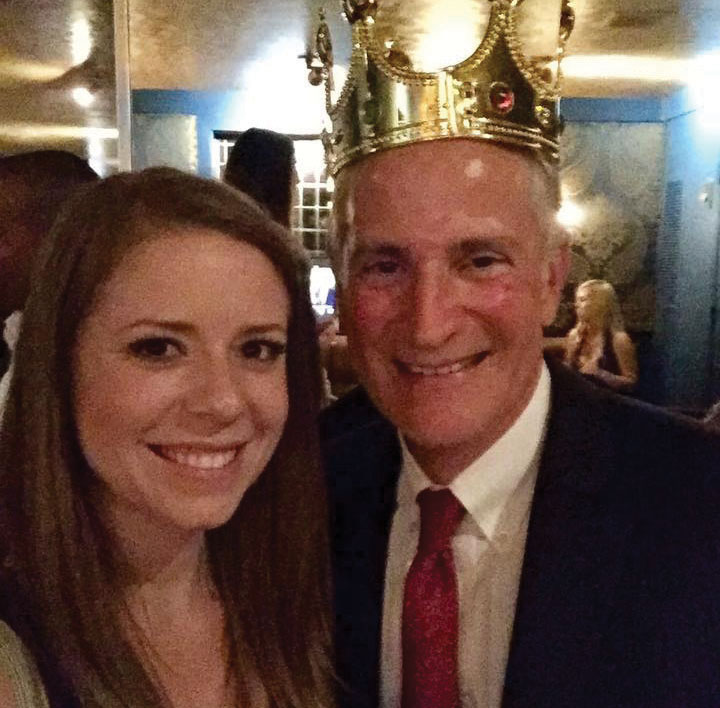 |  |
This year marked the retirement from academia of one of the true legends of GP lenses, Ed Bennett, OD. For nearly 40 years, Dr. Bennett has served as a clinician, researcher, educator, industry leader and mentor to many. Recently, we picked his brain about how the GP lens industry has evolved over his career and what he expects for its future.
First off, congratulations on your retirement from the University of Missouri-St. Louis after 37 years! Where did you develop your passion for GP lenses? Was there a particular professor or patient that inspired you?
I’ve been a rigid lens wearer for more than 52 years, and I personally knew the benefits. When I was fortunate enough to be a fourth-year extern in a newly developed contact lens research externship at Indiana University under the supervision of Drs. Sarita Soni and Irvin Borish. That was life-changing.
I was involved in FDA clinical trials for the first extended-wear lenses, the first soft toric and, most importantly, the first viable gas permeable lens, Polycon I (Art Optical Lens). I was able to observe the edema dissipate in hundreds of polymethylmethacrylate-wearing patients who were refit into GP lenses during my three years on the faculty at Indiana University. And I was hooked!
At one point, many opined that GP lenses would also become obsolete. What factors do you believe have led to their longevity and survival?
I certainly remember the ‘obsolete’ comments, and I am so excited that idea never came close to fruition. Certainly, the revival—and continuing improvement—of scleral lenses has had a significant impact and will continue to do so well into the future.
I’ve seen GP materials advance such that we have stable and wettable lenses, even in as high as 200 Dk. The introduction of the HydraPEG (Tangible Science) coating allows for these lenses to be worn comfortably for longer time periods and aids with the borderline dry eye patients.
 |
| Dr. Bennett with Dr. Ensley. Click image to enlarge. |
In your opinion, what were the greatest innovations in GP lens technologies that have impacted the industry?
Regarding the aforementioned scleral lenses, there are innovations such as molded sclerals and topography-aided, stable, hyper-Dk lens materials and lens coatings. There is continuing improvement in orthokeratology (ortho-K) designs and GP multifocal designs, especially hybrids and sclerals. Major improvements in manufacturing technology resulting in ultrathin and pseudo-aspheric peripheral designs have all been important as well.
Are there any challenges we still face in GPs that you feel can be improved upon?
Of course, the elephant in the room has always been a patient’s initial comfort. Early on, I was involved in a number of studies looking at the relationship between lens design factors and comfort, and the only factor that was significant was diameter. Scleral lenses ultimately supported that finding.
However, we did also find in another study that the use of a topical anesthetic was significant in optimizing a patient’s initial experience along with how you presented GPs to a patient. If the optometrist’s presentation to the patient was proactive and used terms such as “lens awareness” and “lid sensation” as opposed to “discomfort,” they were more likely to be successful.
Today’s lower edge clearance and consistently smooth edge profile designs have resulted in well-centered, better initial comfort results than their predecessors. This is especially important with patients benefiting from the vision achieved with GP bitoric, multifocal and keratoconus/post-surgical designs, and I hope this will continue.
Do you think the online marketplace will ever become a competitor with GP lenses?
It’s difficult to say at this time, but my inclination is no. Obviously the online marketplace will continue to grow, but one of the strengths of GP lenses is their custom nature, which simply does not lend itself easily to the online marketplace.
GP lenses are often perceived as more time consuming and difficult to fit. What advice would you give to a practitioner wanting to build their GP practice?
For the practitioner desiring to start building their GP practice, I would first encourage them to talk to one or more of the Contact Lens Manufacturer’s Association (CLMA) member laboratories about the services and lenses they can provide. Their consultants truly are supportive, and there is no question too simple for them to answer. With the ability to take pictures and videos of lenses on the eye via iPhone slit lamp adapters, as well as corneal topography, providing the laboratory with this information can lead to great success.
The GP Lens Institute (GPLI, www.gpli.info) has a large number of online resources in all areas (spherical, multifocal, toric, irregular cornea, scleral and ortho-K), including video tutorials, calculators and almost 100 archived webinars. There is also a lab consultants FAQs module as well as a coding and billing module.
 |
| Dr. Bennett with Dr. Miller. Click image to enlarge. |
You have also served in many positions and leadership roles. What are you planning on staying involved with in this next phase of life?
I’m still keeping busy. As executive director of the GPLI, my intent is to increase my time in helping develop new GP and custom soft lens resources and programs. I’m still in an editorial position for a contact lens publication, and I definitely enjoy that role. Likewise, I hope to continue to serve on the Education Committee of the Global Specialty Lens Symposium.
The fifth edition my text with Vinita Henry, Clinical Manual of Contact Lenses, is coming out any day now. I’m also excited to be joining a new oversight committee for the AAO in anticipation of their 100th anniversary in 2022. And who knows? There might be something else out there for me to be active in.
Care to offer up any projections for the future of GP lenses in the next 25 years and beyond?
Certainly, scleral lenses will continue to grow and—with the innovations in design including peripheral haptics as well as profilometry— they will become easier and result in higher patient success. We will see continued design innovations in presbyopia with corneal, scleral and hybrid multifocals, including decentered optics to optimize vision at all distances.
Myopia control is on the verge of exploding onto the scene, and it only makes sense that ortho-K will have a significant role, as its designs continue to improve. And GP lenses lend themselves to the augmented/virtual reality lenses now under development, as well as possibly being used as a recording device.
Can you single out any aspect of your career in GP lenses that has been the most rewarding? Did you ever think you would become so influential amongst GP lens industry?
Thirty-two years ago, Carl Moore, then-president of the CLMA, was taking me to the airport. He asked if I would be interested in becoming executive director of the GPLI.
Taking that position was the greatest professional decision I have ever made and has brought me an enormous amount of personal satisfaction. What a joy to be able to have a passion for something and live out that passion surrounded by those who feel the same way, most notably the CLMA board and representatives and our outstanding GPLI advisory board—many of the most knowledgeable GP experts in the world.
It’s been a wonderful life to have been able to serve the profession in several leadership positions and to be able to author articles and textbooks, but it is the opportunity to work for the CLMA in my present capacity that has allowed me to have any influence I might possess—and to follow my dreams!


